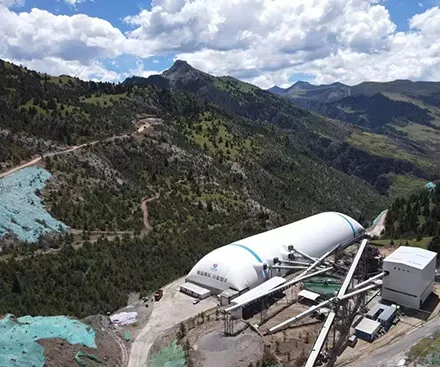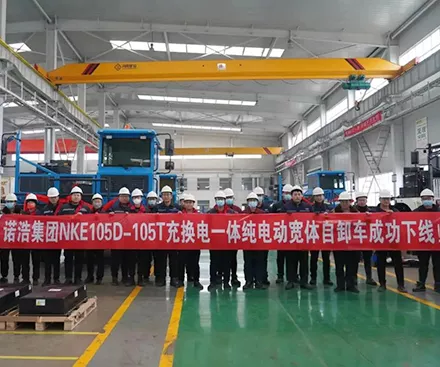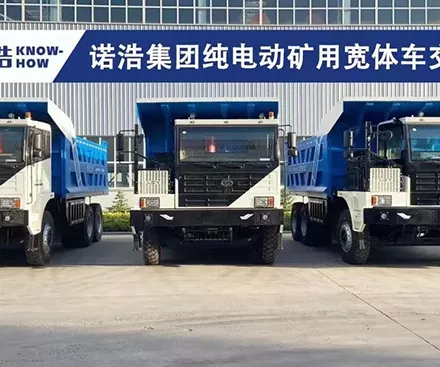In the world of heavy machinery and construction equipment, the term "Heavy-Duty Loader" is one that frequently comes up in discussions, projects, and industry-related dialogues. But what exactly is a Heavy-Duty Loader, and why is it such a crucial asset in construction and various other sectors? In this comprehensive guide, we'll delve deep into the intricacies of Heavy-Duty Loaders, exploring their functions, features, and the industries that rely on them.
A Heavy-Duty Loader is a powerful piece of machinery designed to perform various tasks in industries like construction, mining, agriculture, and more. It's known for its versatility, robustness, and ability to handle heavy loads with ease. Heavy-Duty Loaders, often referred to as front-end loaders or wheel loaders, have become indispensable in many sectors due to their impressive capabilities.
They're used to move loads like dirt or loose materials from place to place, and they have large wheels that get traction on damp surfaces. Loaders are a crowd favourite for their mobility and the loads they can carry. The bucket of a wheel loader is significantly bigger than an excavator, which is why they are favoured for moving large masses.
Wheel loaders come in various sizes, including small, medium and large. Due to their structure, having front and rear axles, they can support a more considerable amount of weight. While wheel loaders can certainly be used for digging, this is not their primary function, and as such, they don’t quite compare with excavators.
Wheel loaders are great for pushing and pulling loads, but they can't match the versatility of an excavator. The flexibility of 360 degree operating ability offers more possibilities than one that only works in straight lines or at right angles - especially when you need to penetrate into sites where other types of equipment won’t go due to risks associated with entering hard-to-reach places.
These machines are typically equipped with a front bucket or scoop that can be raised, lowered, and tilted as needed. The bucket is attached to the loader's arms and is controlled by a hydraulic system, making it easy to manipulate heavy materials like dirt, gravel, sand, or debris.
To fully grasp the significance of a Heavy-Duty Loader, let's take a closer look at its essential components:
The chassis is the framework that supports the entire machine. It's designed to endure substantial stress and strain, ensuring the loader's stability and durability.
The engine is the powerhouse of the Heavy-Duty Loader, providing the necessary horsepower to operate the machinery efficiently. These engines are built to withstand heavy workloads and extended operating hours.
The hydraulic system enables the smooth operation of the loader's various functions, such as raising and lowering the bucket or tilting it to empty the load. This system ensures precision and control, allowing operators to handle materials with ease.
The bucket is the working end of the loader, where it collects, carries, and deposits materials. Buckets come in various sizes to accommodate different load capacities.
Heavy-Duty Loaders find applications in an array of industries, contributing significantly to their operations. Here are some key sectors where these machines are indispensable:
In the construction industry, Heavy-Duty Loaders are used for tasks like excavation, site preparation, and material handling. Their ability to swiftly load and transport heavy materials makes them an asset on construction sites.
Mining operations often require the movement of massive amounts of earth and ore. Heavy-Duty Loaders are well-suited for this purpose, assisting in the excavation of minerals and their transportation within the mine.
In agriculture, Heavy-Duty Loaders are employed for tasks such as clearing land, digging trenches, and handling large bales of hay or other crops. Their versatility is invaluable for modern farming practices.
Waste disposal and recycling facilities use Heavy-Duty Loaders to manage and transport various types of waste materials. The machines' robust design ensures efficient handling of heavy loads.
Heavy-Duty Loaders are also utilized in the forestry industry for tasks like moving logs, clearing land for tree planting, and loading harvested timber. Their agility in dense forest environments is particularly advantageous.
The utilization of Electric Heavy-Duty Loaders offers several advantages that make them an attractive choice for businesses in multiple industries:
Heavy-Duty Loaders can complete tasks quickly and efficiently, reducing labor costs and project timelines.
Their adaptability for various applications makes them an all-in-one solution for multiple industries, eliminating the need for specialized equipment.
Heavy-Duty Loaders are built to withstand harsh working conditions and heavy loads, ensuring long-term reliability.
Modern Heavy-Duty Loaders are equipped with ergonomic cabs, air conditioning, and advanced controls, providing operators with comfort during long shifts.
Wheel loaders are categorized by the following sizes:
Compact wheel loaders: As the smallest wheel loader type, compact loaders have a horsepower under 125 and an operating weight of up to 25,000 pounds.
Small wheel loaders: Small wheel loaders provide between 125 and 200 horsepower and are rated at an operating weight of between 25,000 and 50,000 pounds.
Medium wheel loaders: Providing between 200 and 400 horsepower, medium wheel loaders can carry up to 80,000 pounds in operating weight.
Large wheel loaders: Within the large wheel loader category, you’ll find horsepower ranges between 375 and 1,700, with machines boasting an operating weight of over 100,000 pounds. The largest wheel loaders can carry an operating weight of over 500,000 pounds.
As industries evolve, so do Heavy-Duty Loaders. The digital age has brought about significant advancements in technology, leading to the development of smart loaders. These loaders are equipped with advanced telematics and control systems, enhancing efficiency and safety. With the ability to monitor and optimize performance, smart loaders are making waves in the construction and mining sectors.
In conclusion, a Heavy-Duty Loader is a versatile and powerful piece of machinery that plays a pivotal role in numerous industries, including construction, mining, agriculture, waste management, and forestry. Their robust design, efficiency, and adaptability have made them a cornerstone of modern industrial operations. As industries continue to advance, Heavy-Duty Loaders are likely to evolve even further, cementing their status as indispensable assets.

Jul. 23, 2022
View More
Jun. 15, 2022
View More
Jun. 01, 2022
View More